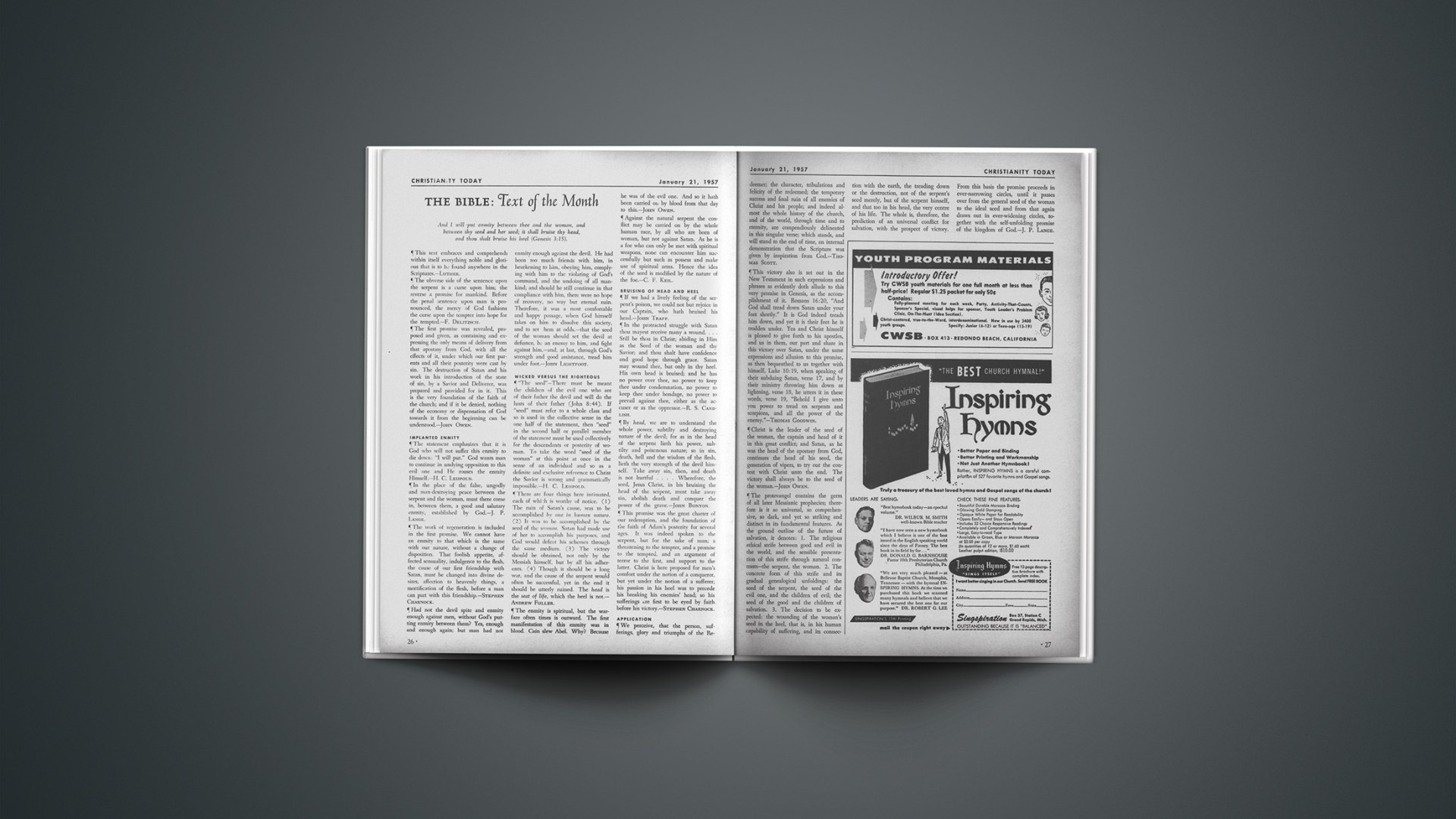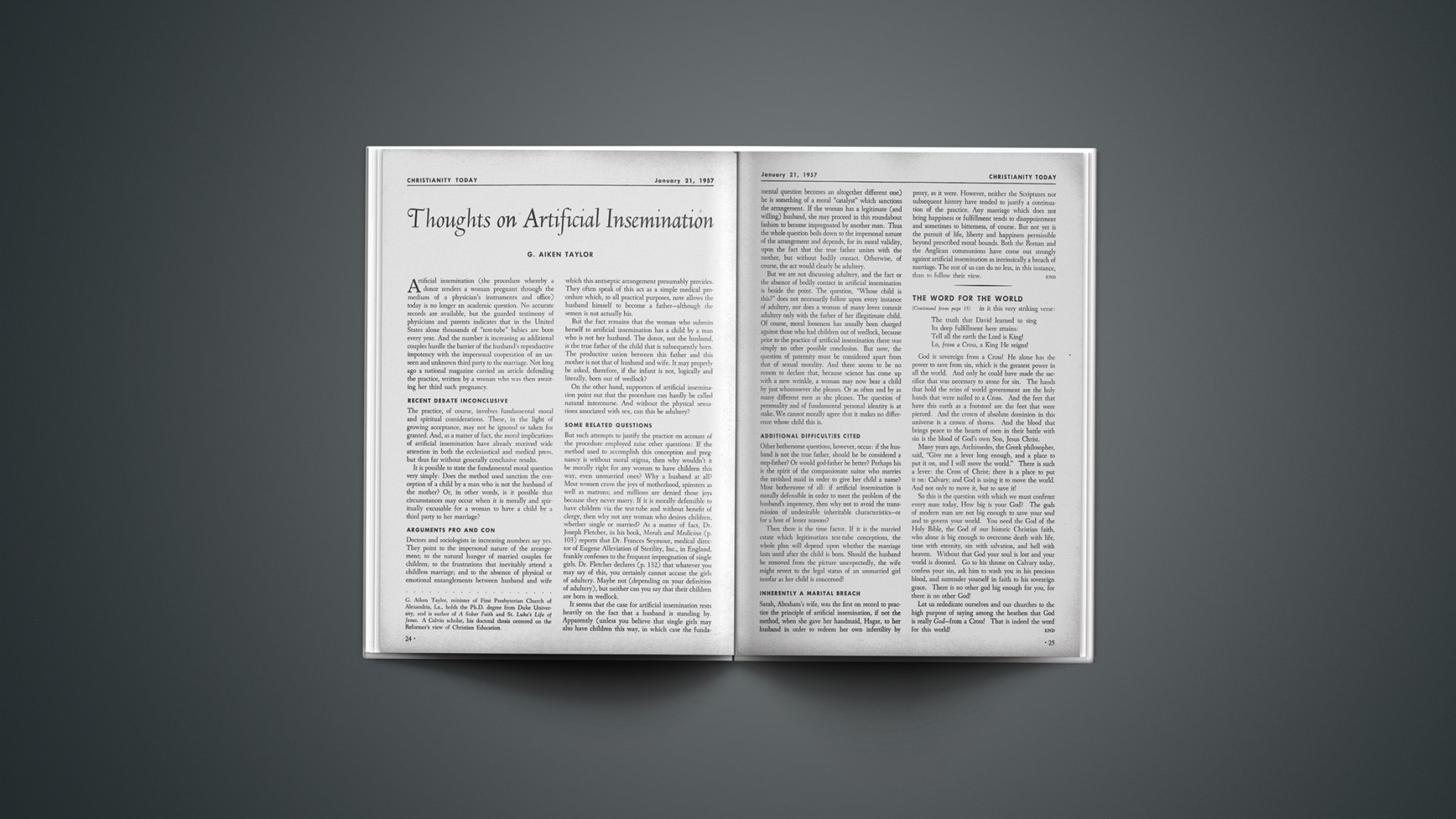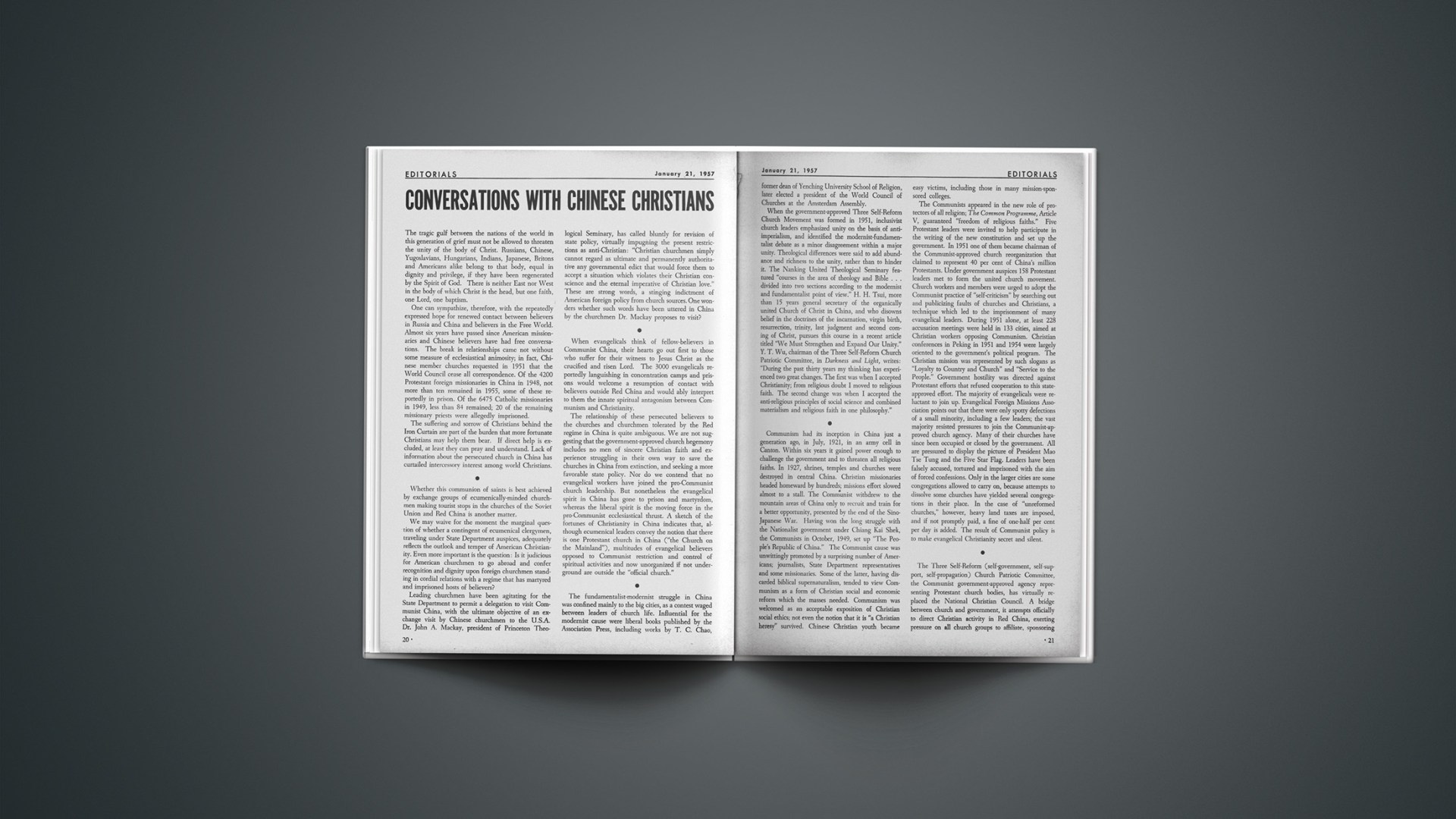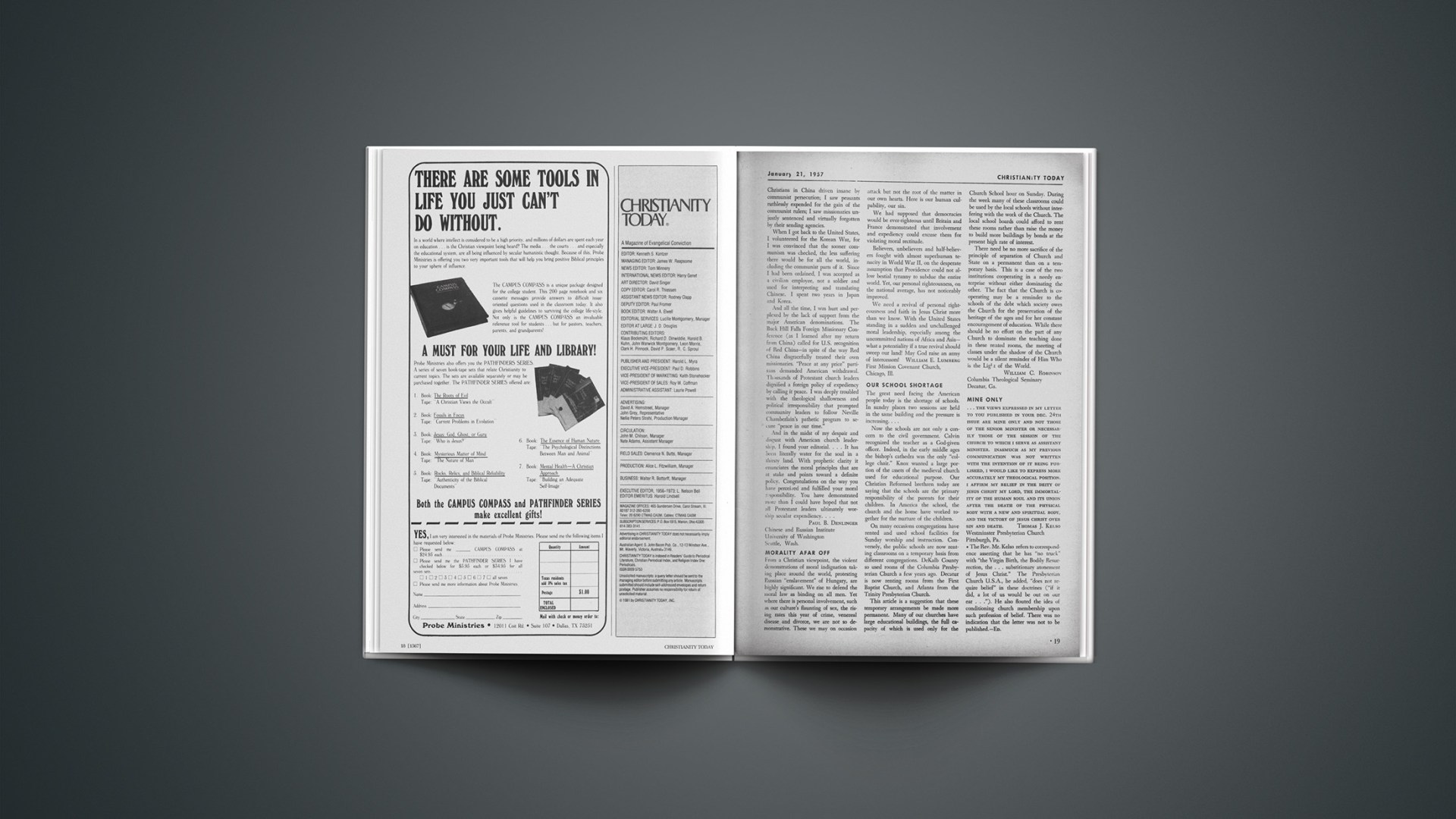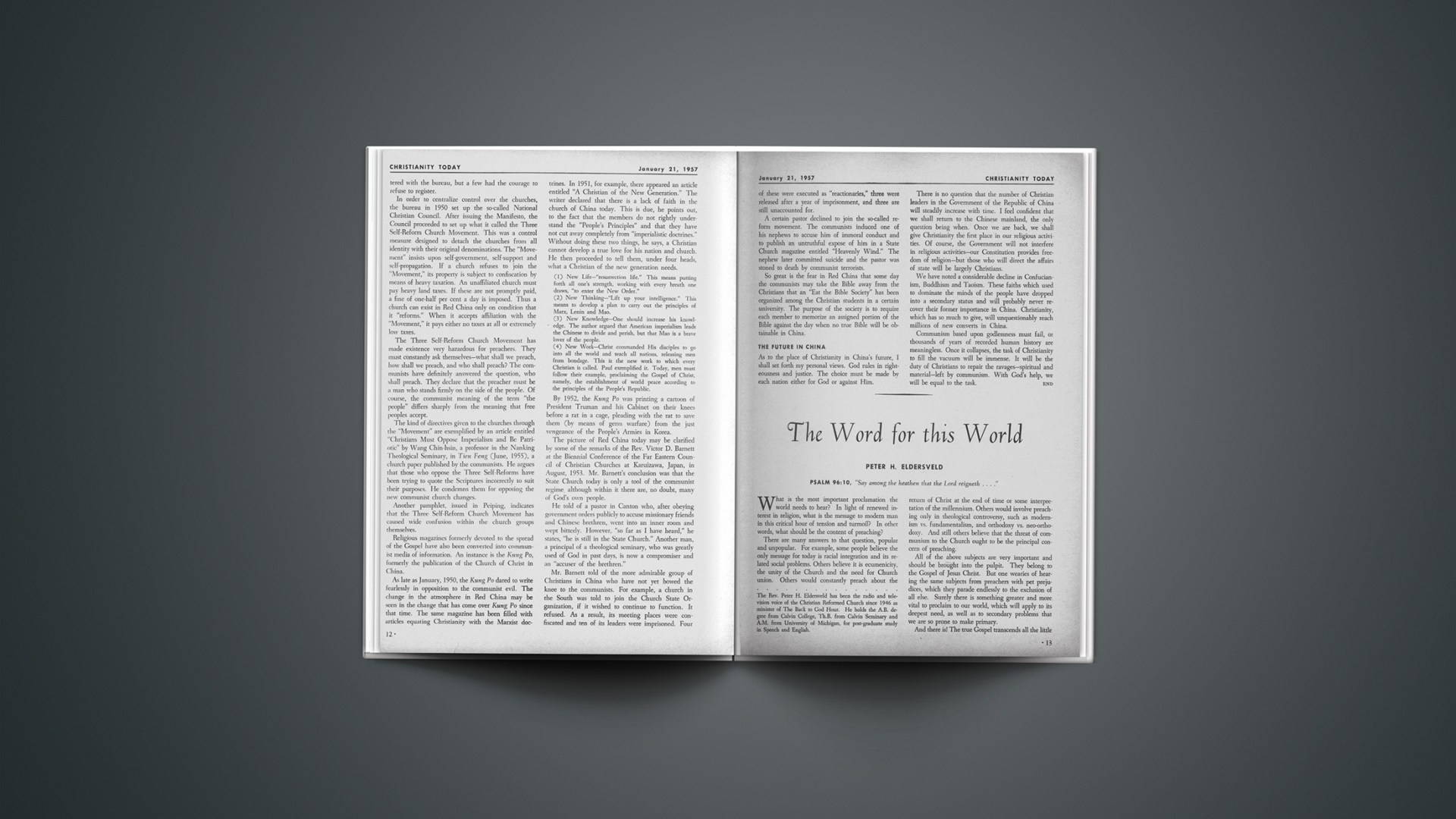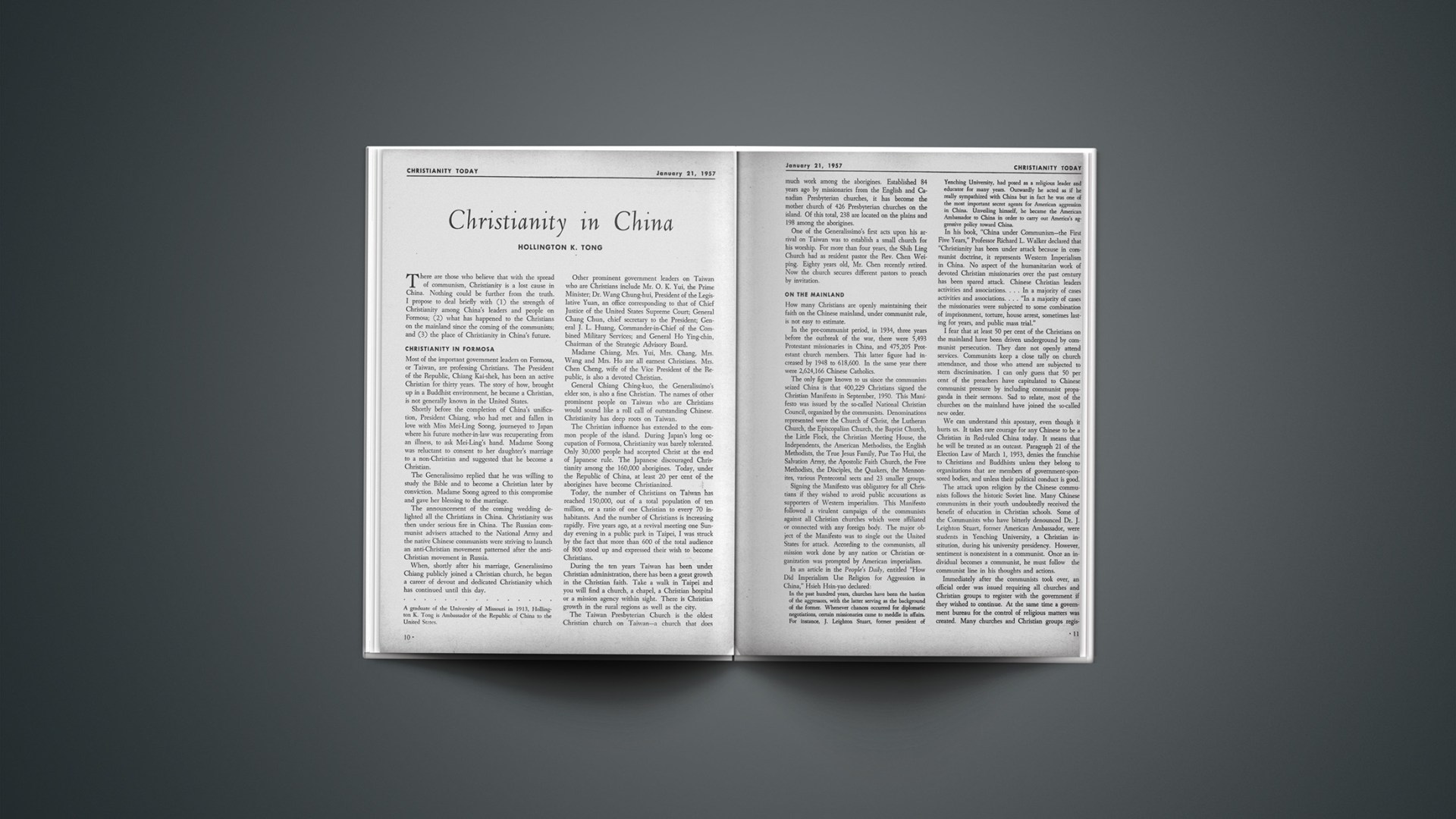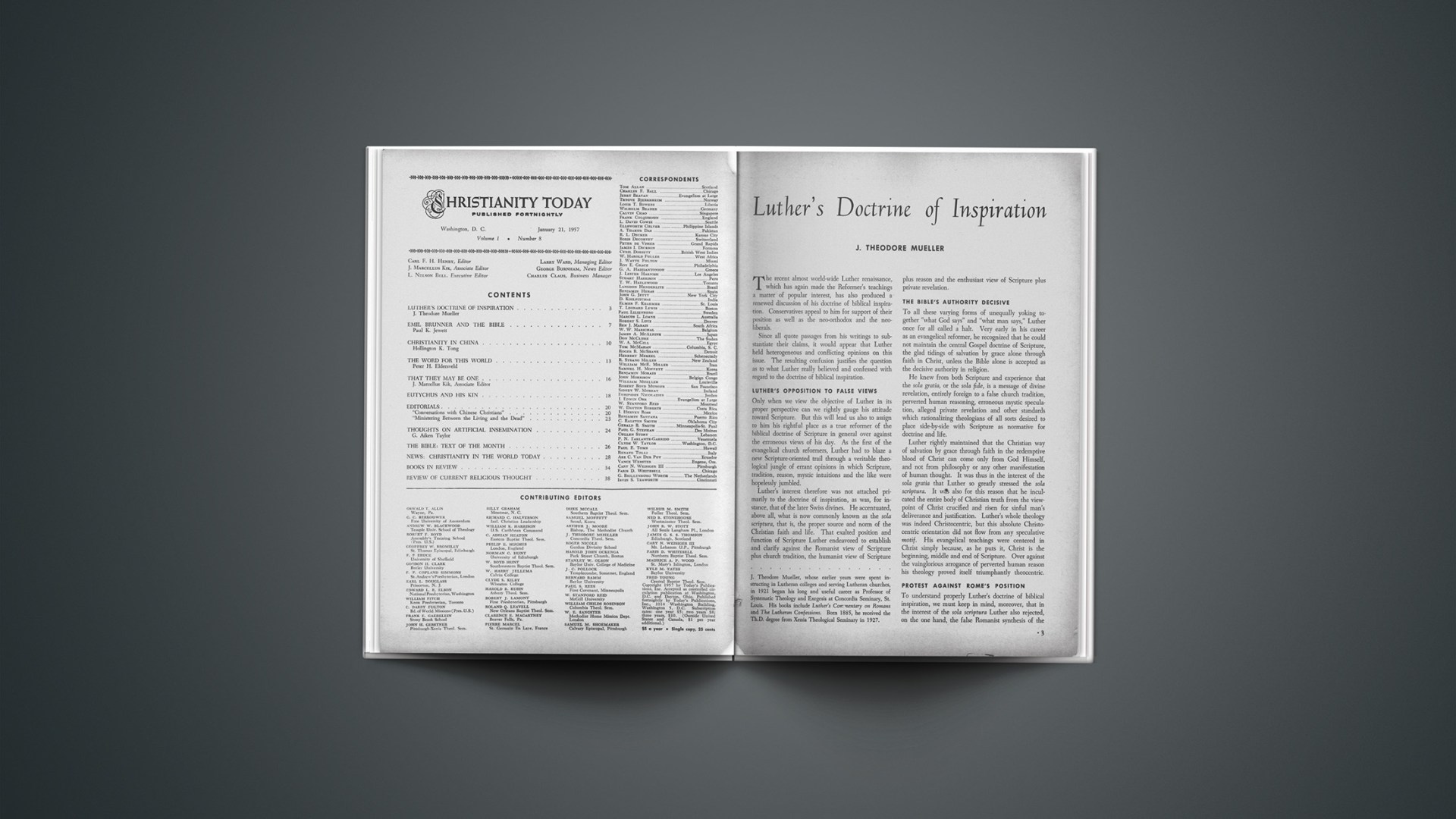And I will put enmity between thee and the woman, and
Between thy seed and her seed; it shall bruise thy head,
And thou shalt bruise his heel (Genesis 3:15).
This text embraces and comprehends within itself everything noble and glorious that is to be found anywhere in the Scriptures.—LUTHER.
The obverse side of the sentence upon the serpent is a curse upon him; the reverse a promise for mankind. Before the penal sentence upon man is pronounced, the mercy of God fashions the curse upon the tempter into hope for the tempted.—F. DELITZSCH.
The first promise was revealed, proposed and given, as containing and expressing the only means of delivery from that apostasy from God, with all the effects of it, under which our first parents and all their posterity were cast by sin. The destruction of Satan and his work in his introduction of the state of sin, by a Savior and Deliverer, was prepared and provided for in it. This is the very foundation of the faith of the church; and if it be denied, nothing of the economy or dispensation of God towards it from the beginning can be understood.—JOHN OWEN.
Implanted Enmity
The statement emphasizes that it is God who will not suffer this enmity to die down: “I will put.” God wants man to continue in undying opposition to this evil one and He rouses the enmity Himself.—H. C. LEUPOLD.
In the place of the false, ungodly and man-destroying peace between the serpent and the woman, must there come in, between them, a good and salutary enmity, established by God.—J. P. LANGE.
The work of regeneration is included in the first promise. We cannot have an enmity to that which is the same with our nature, without a change of disposition. That foolish appetite, affected sensuality, indulgence to the flesh, the cause of our first friendship with Satan, must be changed into divine desires, affection to heavenly things, a mortification of the flesh, before a man can part with this friendship.—STEPHEN CHARNOCK.
Had not the devil spite and enmity enough against men, without God’s putting enmity between them? Yes, enough and enough again; but man had not enmity enough against the devil. He had been too much friends with him, in hearkening to him, obeying him, complying with him to the violating of God’s command, and the undoing of all mankind; and should he still continue in that compliance with him, there were no hope of recovery, no way but eternal ruin. Therefore, it was a most comfortable and happy passage, when God himself takes on him to dissolve this society, and to set hem at odds,—that the seed of the woman should set the devil at defiance, be an enemy to him, and fight against him,—and, at last, through God’s strength and good assistance, tread him under foot.—JOHN LIGHTFOOT.
Wicked Versus The Righteous
“Thy seed”—There must be meant the children of the evil one who are of their father the devil and will do the lusts of their father (John 8:44). If “seed” must refer to a whole class and so is used in the collective sense in the one half of the statement, then “seed” in the second half or parallel member of the statement must be used collectively for the descendants or posterity of woman. To take the word “seed of the woman” at this point at once in the sense of an individual and so as a definite and exclusive reference to Christ the Savior is wrong and grammatically impossible.—H. C. LEUPOLD.
There are four things here intimated, each of which is worthy of notice. (1) The ruin of Satan’s cause, was to be accomplished by one in human nature. (2) It was to be accomplished by the seed of the woman. Satan had made use of her to accomplish his purposes, and God would defeat his schemes through the same medium. (3) The victory should be obtained, not only by the Messiah himself, but by all his adherents. (4) Though it should be a long war, and the cause of the serpent would often be successful, yet in the end it should be utterly ruined. The head is the seat of life, which the heel is not.—ANDREW FULLER.
The enmity is spiritual, but the warfare often times is outward. The first manifestation of this enmity was in blood. Cain slew Abel. Why? Because he was of the evil one. And so it hath been carried on by blood from that day to this.—JOHN OWEN.
Against the natural serpent the conflict may be carried on by the whole human race, by all who are born of woman, but not against Satan. As he is a foe who can only be met with spiritual weapons, none can encounter him successfully but such as possess and make use of spiritual arms. Hence the idea of the seed is modified by the nature of the foe.—C. F. KEIL.
Bruising Of Head And Heel
If we had a lively feeling of the serpent’s poison, we could not but rejoice in our Captain, who hath bruised his head.—JOHN TRAPP.
In the protracted struggle with Satan thou mayest receive many a wound.… Still be thou in Christ; abiding in Him as the Seed of the woman and thy Savior; and thou shalt have confidence and good hope through grace. Satan may wound thee, but only in thy heel. His own head is bruised; and he has no power over thee, no power to keep thee under condemnation, no power to keep thee under bondage, no power to prevail against thee, either as the accuser or as the oppressor.—R. S. CANDLISH.
By head, we are to understand the whole power, subtilty and destroying nature of the devil; for as in the head of the serpent lieth his power, subtilty and poisonous nature; so in sin, death, hell and the wisdom of the flesh, lieth the very strength of the devil himself. Take away sin, then, and death is not hurtful.… Wherefore, the seed, Jesus Christ, in his braising the head of the serpent, must take away sin, abolish death and conquer the power of the grave.—JOHN BUNYON.
This promise was the great charter of our redemption, and the foundation of the faith of Adam’s posterity for several ages. It was indeed spoken to the serpent, but for the sake of man; a threatening to the tempter, and a promise to the tempted, and an argument of terror to the first, and support to the latter. Christ is here proposed for men’s comfort under the notion of a conqueror, but yet under the notion of a sufferer; his passion in his heel was to precede his breaking his enemies’ head; so his sufferings are first to be eyed by faith before his victory.—STEPHEN CHARNOCK.
Application
We perceive, that the person, sufferings, glory and triumphs of the Redeemer; the character, tribulations and felicity of the redeemed; the temporary success and final ruin of all enemies of Christ and his people; and indeed almost the whole history of the church, and of the world, through time and to eternity, are compendiously delineated in this singular verse; which stands, and will stand to the end of time, an internal demonstration that the Scripture was given by inspiration from God.—THOMAS SCOTT.
This victory also is set out in the New Testament in such expressions and phrases as evidently doth allude to this very promise in Genesis, as the accomplishment of it. Romans 16:20, “And God shall tread down Satan under your feet shortly.” It is God indeed treads him down, and yet it is their feet he is trodden under. Yea and Christ himself is pleased to give forth to his apostles, and us in them, our part and share in this victory over Satan, under the same expressions and allusion to this promise, as then bequeathed to us together with himself, Luke 10:19, when speaking of their subduing Satan, verse 17, and by their ministry throwing him down as lightning, verse 18, he utters it in these words, verse 19, “Behold I give unto you power to tread on serpents and scorpions, and all the power of the enemy.”—THOMAS GOODWIN.
Christ is the leader of the seed of the woman, the captain and head of it in this great conflict; and Satan, as he was the head of the apostasy from God, continues the head of his seed, the generation of vipers, to try out the contest with Christ unto the end. The victory shall always be to the seed of the woman.—JOHN OWEN.
The protevangel contains the germ of all later Messianic prophecies; therefore is it so universal, so comprehensive, so dark, and yet so striking and distinct in its fundamental features. As the ground outline of the future of salvation, it denotes: 1. The religious ethical strife between good and evil in the world, and the sensible presentation of this strife through natural contrasts—the serpent, the woman. 2. The concrete form of this strife and its gradual genealogical unfoldings: the seed of the serpent, the seed of the evil one, and the children of evil; the seed of the good and the children of salvation. 3. The decision to be expected: the wounding of the woman’s seed in the heel, that is, in his human capability of suffering, and its connection with the earth, the treading down or the destruction, not of the serpent’s seed merely, but of the serpent himself, and that too in his head, the very centre of his life. The whole is, therefore, the prediction of an universal conflict for salvation, with the prospect of victory. From this basis the promise proceeds in ever-narrowing circles, until it passes over from the general seed of the woman to the ideal seed and from that again draws out in ever-widening circles, together with the self-unfolding promise of the kingdom of God.—J. P. LANGE.

